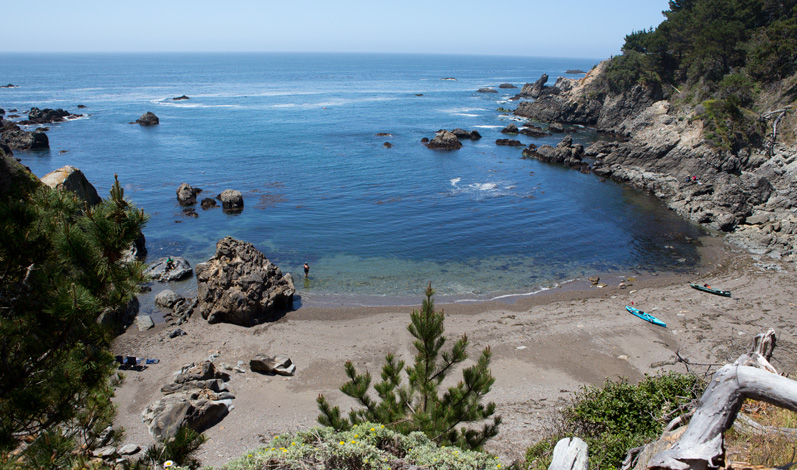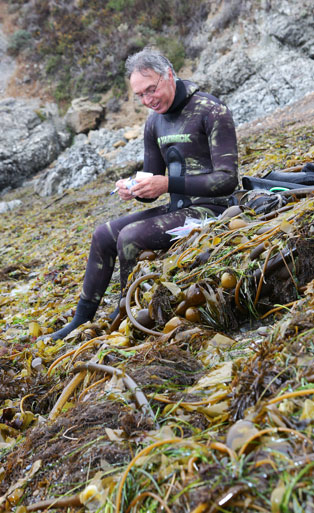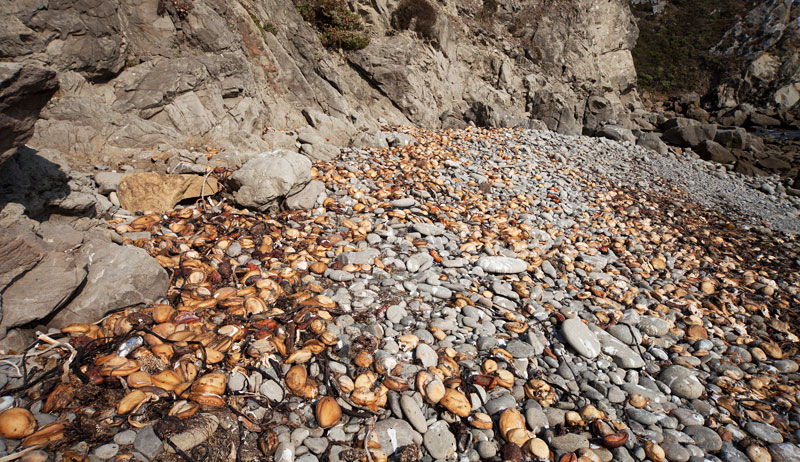Last year, about 256,000 red abalone were legally taken by recreational divers on California’s north coast. Now, the California Department of Fish and Wildlife is exploring new ways to manage the abalone fishery to both preserve the populations of abalone and allow divers to continue to harvest the tasty mollusks.
Through an online survey, the Department of Fish and Wildlife is now asking divers for their input on how the red abalone fishery should be managed. The responses from the survey will augment the comments received during public meetings held last fall, and help inform an upcoming fisher management plan for red abalone. The online survey, which will run through March 6, will help Fish and Wildlife examine different methods of managing the harvesting of abalone. It includes questions about a lottery system for heavily fished sites or the entire coast and changing the minimum size limit, among others.
The online survey also asks about abalone diving habits, priorities (such as catching trophy-size abalone), and whether divers would support different rules at different areas. It also asks divers if they would be winning to pay an increased fee to help reduce poaching. There are 8 questions in total and takes just a few minutes to complete.
Currently, Fish and Wildlife has divided the coast into over 50 sites, so that divers can report where exactly they pluck abalone from the ocean or rocky shorelines. Except for the catch limits in Marin and Sonoma and the Fort Ross closure, they are all currently managed the same way.
The Department has several possible solutions, once of which could allow specific locations to have tighter rules on abalone diving, instead of applying blanket regulations that manage the taking of abalone over the entire region. These more finely-tuned rules could allow divers a better chance at catching abalone in areas where they are more abundant while protecting areas which have lower populations of abalone. It would also, however, be more difficult to enforce and require more planning by divers to make sure they’re abiding by specific regional restrictions.
The department could also institute a progressive system, in which divers pay more to take more abalone.
With a combination of overfishing, poor management, disease and predation, a massive decline of abalone took place in the 20th century. As a result, the state Fish and Game Commission banned the take of certain abalone species in 1993 and ultimately banned all abalone fishing, both commercial and recreational, south of the San Francisco Bay in 1997.
Since 2005, the rules and regulations for abalone diving have been dictated by California’s Abalone Recovery and Management Plan. During the development of the ARMP, informal comments were received through an advisory panel, workshops, letters, and the CDFW website which were used to shape and revise the plan. Once the revised draft was presented to the Commission, a formal public review period helped the Commission amend the plan prior to adoption. During the formal public comment period, the Commission held a series of public comment meetings, and written comments were collected and recorded. The document underwent a final editing process before formal adoption by the Commission on December 9, 2005.
The original recovery and management plan allowed recreational divers to take up to 24 abalone a year. The plan includes allowances to reduce catch limits, or to close diving sites entirely, if abalone densities fall below certain limits.
Once such closure took place in 2011 when an algae bloom happened near Fort Ross in Sonoma County, killing thousands of abalone. The population densities were reduced by as much as 60% in the affected areas. Because densities dropped below a certain threshold at a selection of sites used by the state to assess the fishery’s health, the annual take limit was reduced in all areas in 2014 to 18 annually. Based on the differences in abalone population densities between Sonoma and Mendocino data, the agency divided the region into two sections: divers could only take nine of those 18 from Marin and Sonoma.
To complete the online survey, visit this link: http://wildlife.ca.gov/Fishing/Invertebrates/Abalone/Survey



